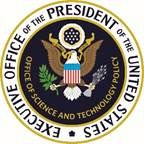
Homesteading in Space: White House Science Office Seeks Sci-Fi Inspiration

The White House Science Office is taking a page out of science fiction to help shape the future of U.S. space exploration.
At the California NanoSystems Institute/UCLA in Los Angeles, California this month, the White House Office of Science and Technology Policy (OSTP) co-sponsored a look at humanity's future in space under a program called: "Homesteading in Space – Inspiring the Nation through Science Fiction."
Roughly 70 space scientists, engineers, entrepreneurs, along with storytellers, artists, directors, and producers met to show their interest in science fiction and space exploration with a view toward future "homesteading" in space. Other co-sponsors were the National Academy of Sciences, Science & Entertainment Exchange, and the Museum of Science Fiction.
The California NanoSystems Institute (CNSI) is an integrated research facility with locations at UCLA and UC Santa Barbara. Its mission is to encourage university collaboration with industry and to enable the rapid commercialization of discoveries in nanoscience and nanotechnology.

The intent of the heady gathering was to gather stories that will energize the public, inspire children to pursue Science, Technology, Engineering, Math (STEM) careers. But there was a key add-on: Help make science fiction become science fact.
The program also included interactive discussions, with each one focused on specific areas of future science and technology related to how we can travel to and live on Mars and ultimately beyond.
Science Fiction Meets Space Fact
Technical experts were divided between the following five future technology topics:
Breaking space news, the latest updates on rocket launches, skywatching events and more!
- Exploring Space: How will we leave the earth and travel to other planets?
- Prospecting: How will we find and collect chemicals and minerals from asteroids and other planets?
- Manufacturing: How will we make the materials and manufacture the things we need to build a community on another planet?
- Bioengineering: How will we use biotechnology, including synthetic biology, to create food, fuel, and useful chemicals using engineered bacteria and plant life?
- World Building: How will we not only survive but thrive in space, creating communities and maintaining our physical and mental health?
White House role

Making use of all media — novels, short stories, design fiction, new media, video, film, TV, VR, gaming, etc. – the gathering was focused on using science fiction to express positive, entertaining views of a future "homesteading" in space.
The White House OSTP role was to ascertain what steps the government and the private sector can take to:
- further inform the creative community about a positive vision of a future in space; and
- encourage people to incorporate this vision into entertaining stories that will excite the public, energize entrepreneurs, and motivate inspire children.
Leonard David has been reporting on the space industry for more than five decades. He is former director of research for the National Commission on Space and is co-author of Buzz Aldrin's 2013 book "Mission to Mars – My Vision for Space Exploration" published by National Geographic with a new updated paperback version released in May 2015. Follow us @Spacedotcom, Facebook or Google+. Published on Space.com.
Join our Space Forums to keep talking space on the latest missions, night sky and more! And if you have a news tip, correction or comment, let us know at: community@space.com.

Leonard David is an award-winning space journalist who has been reporting on space activities for more than 50 years. Currently writing as Space.com's Space Insider Columnist among his other projects, Leonard has authored numerous books on space exploration, Mars missions and more, with his latest being "Moon Rush: The New Space Race" published in 2019 by National Geographic. He also wrote "Mars: Our Future on the Red Planet" released in 2016 by National Geographic. Leonard has served as a correspondent for SpaceNews, Scientific American and Aerospace America for the AIAA. He has received many awards, including the first Ordway Award for Sustained Excellence in Spaceflight History in 2015 at the AAS Wernher von Braun Memorial Symposium. You can find out Leonard's latest project at his website and on Twitter.
